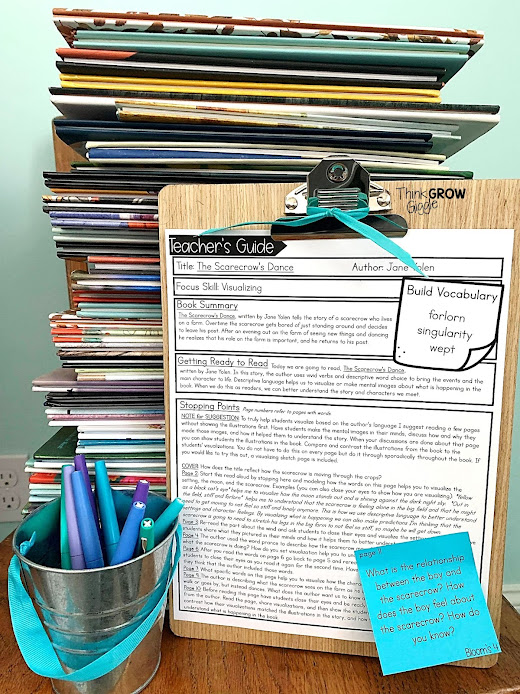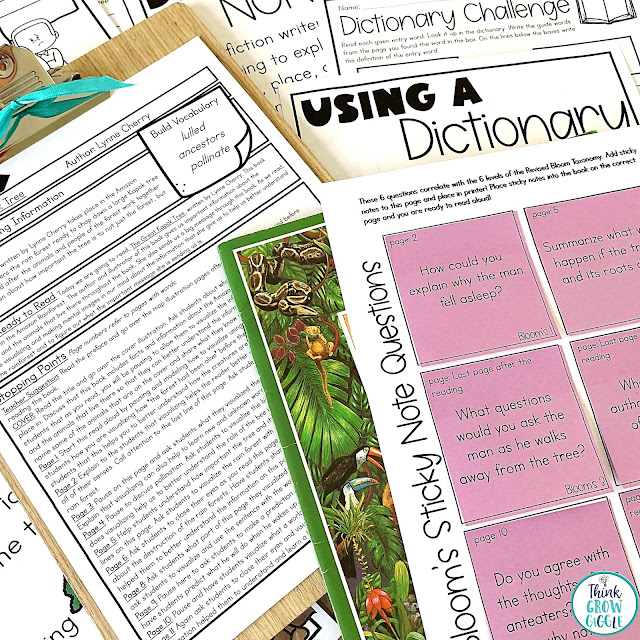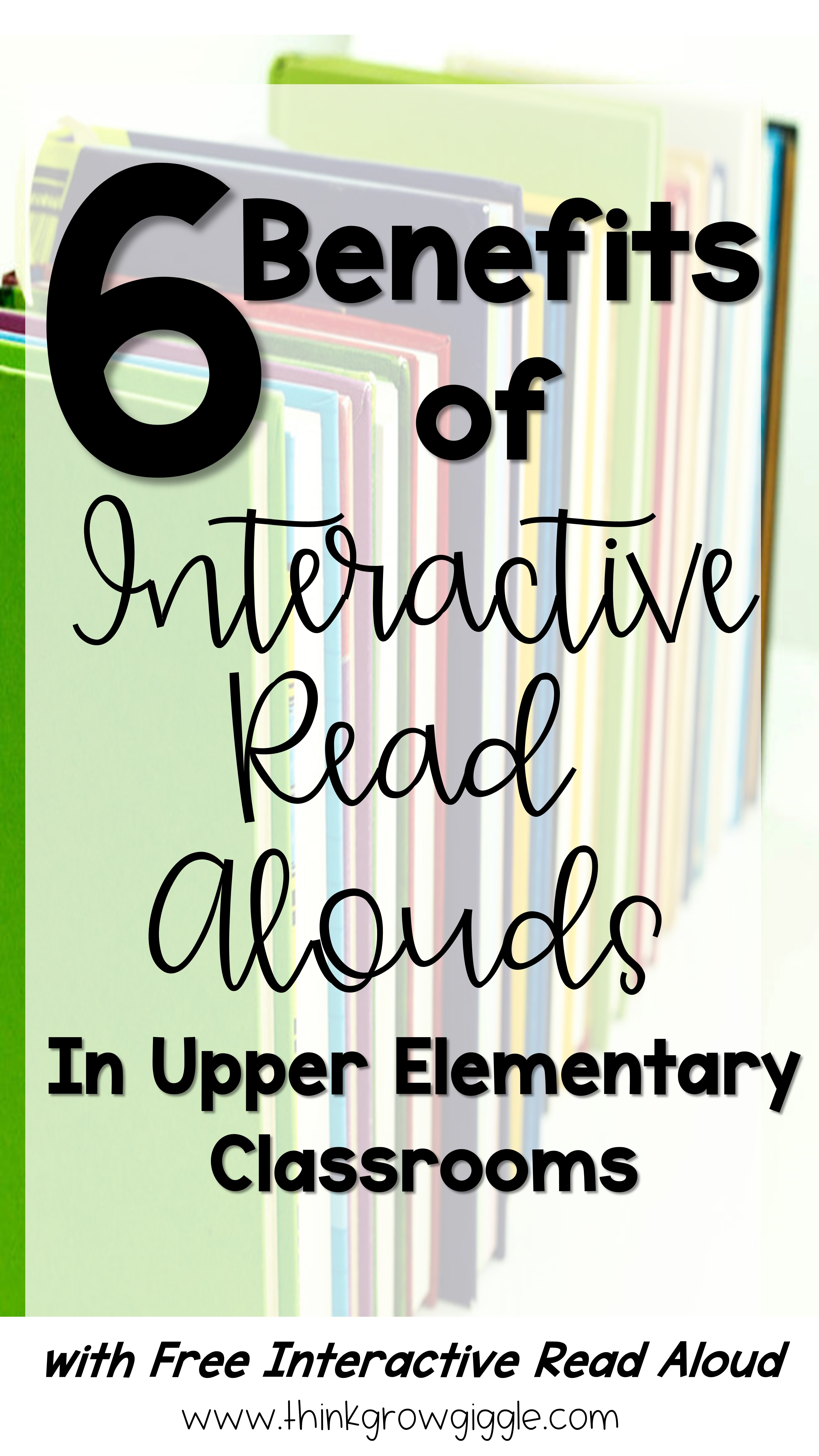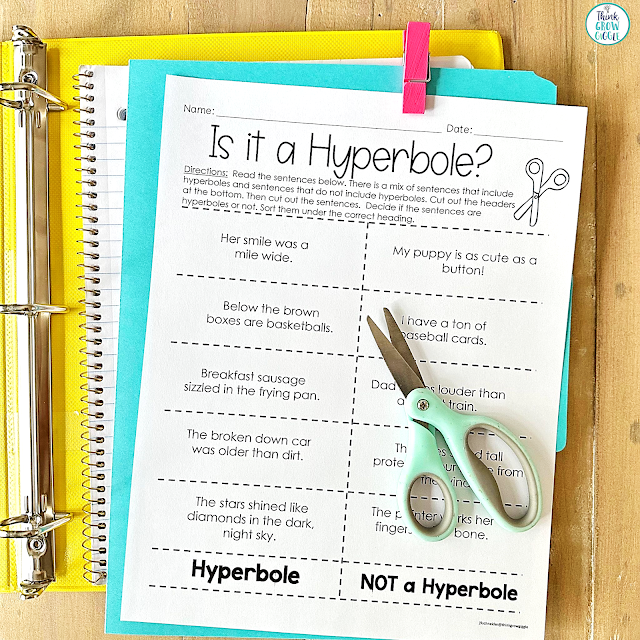If you have followed me for any amount of time, you know that reading picture books with my upper elementary students is totally my thing! There is just something about gathering together and listening to a powerful story told through rich vocabulary and beautiful illustrations that truly makes the day brighter!
Interactive Read Alouds (IRAs) are a powerful instructional strategy that can bring literature to life and engage students in meaningful discussions. While commonly used in early elementary classrooms, IRAs offer numerous benefits when implemented in upper elementary classrooms.
I know you will love using Interactive Read Alouds with your students as much as I do, so grab the FREE pack below!
Now read on to find out the top 6 benefits of using interactive read-alouds with students in your upper elementary classroom!
1. Enhanced Comprehension Skills
Interactive Read Alouds provide a unique opportunity for teachers to model and reinforce essential comprehension skills. By strategically pausing during the reading to ask open-ended questions, make predictions, or analyze characters' motivations and feelings, teachers can guide students toward a deeper understanding of the text. These discussions allow students to make connections, infer meaning, and develop critical thinking skills, leading to improved comprehension and analytical abilities.
2. Increased Vocabulary Development
One of the main benefits of interactive read-aloud is the exposure to rich and diverse vocabulary. Upper elementary students are at a crucial stage in their language development, and by reading aloud high-quality texts, YOU can expose them to sophisticated vocabulary beyond their current reading level. Through discussions and context clues provided during IRAs, students can expand their word knowledge and improve their overall language skills, which will significantly benefit their reading and writing abilities. The more they listen to books with rich language, the more those words trickle down into their writing pieces!
3. Fostering a Love for Reading
Interactive read-alouds create a positive reading experience for students and help foster a love for literature. By selecting captivating texts and utilizing engaging reading strategies, you can captivate students' interest and make reading something that your students look forward to doing each day. It can help students build relationships with the characters that they meet, helping them realize that they are not along in many of the thoughts and feelings that they experience themselves. Sharing their enthusiasm for books during interactive read-alouds can inspire students to explore new genres, authors, and topics independently, cultivating a lifelong love for reading.
4. Development of Listening and Speaking Skills
Interactive read-alouds provide an ideal platform for students to develop their listening and speaking skills, which is so important! By actively participating in discussions, asking and answering questions, and engaging in dialogue with peers, students learn to express their thoughts and opinions effectively and appropriately. They learn how to engage in one on one discussions with a reading partner and learn how to build off of someone else's ideas. This process enhances their oral communication skills, encourages active listening, and promotes respectful and thoughtful interactions within the classroom community.
5. Save Valuable Classroom Instructional Time
We are always looking for more time in our teaching day, am I right? If you are like me, you can't wait to pull out a new picture book and share it with your students! But...instead of always reading a new picture book, reread a previously read picture book again and again, each time revisiting the book with a new lens: read as readers, read as writers, and read as word-smiths.
When you reread previously read picture books, you help students:
- focus on the skill or objective of your lesson instead of trying to comprehend a new story AND master a new skill
- understand that good readers reread books and texts over and over to learn something new, better understand what was read, or just for enjoyment
- build confidence in their reading comprehension and retell/summarizing skills
Revisiting books is not just fun and beneficial for students; it saves YOU classroom time!
6. Social-Emotional Growth
Literature often provides a gateway to explore social and emotional themes, and interactive read-alouds can serve as a valuable tool for addressing these topics. By selecting books that depict diverse characters and tackle relevant issues, you can initiate meaningful conversations about empathy, kindness, resilience, friendship, and so much more. These discussions not only promote social-emotional growth but also create a safe and inclusive classroom environment where students feel understood, valued, and connected. We all want more time in our teaching day to get in social emotional topics, and picture books truly help us bring more than just reading into our day.
Not sure what books to use with your upper elementary students? Grab this FREE list of my favorites with the skills that we focus on for each book!
Interactive read-alouds have the power to transform upper elementary classrooms by fostering comprehension skills, expanding vocabulary, nurturing a love for reading, developing communication abilities, and promoting social-emotional growth. By implementing this instructional strategy effectively, teachers can engage students in meaningful conversations, create memorable reading experiences, and equip them with the necessary skills to become lifelong learners. As educators, let us embrace the power of interactive read-alouds to inspire, motivate, and empower our upper elementary students on their educational journey.



























